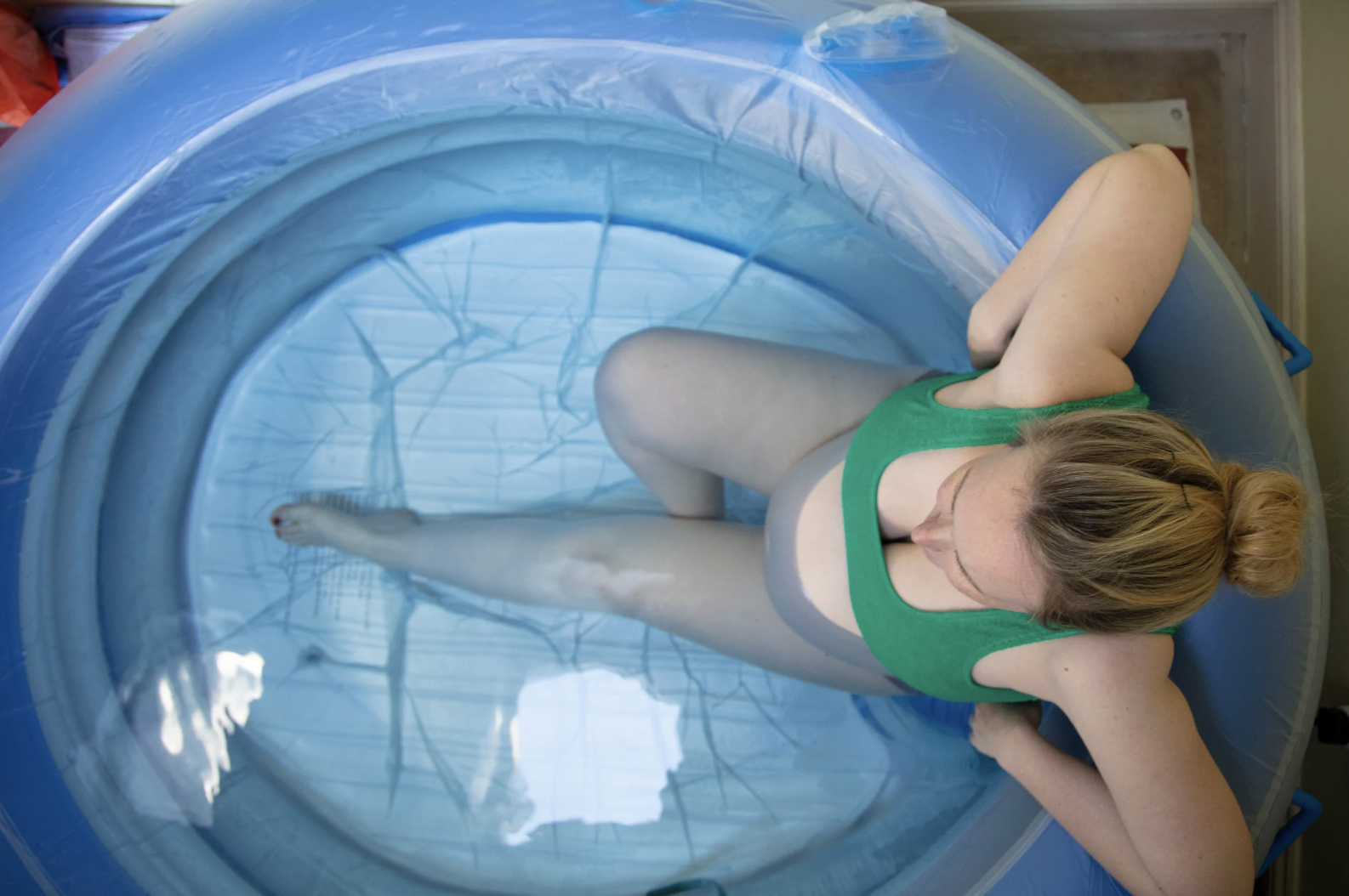Kirsten Fisch, MSN, RNC-MNN, IBCLC, LCCE Kirsten is a women's health nurse who specializes in high-risk pregnancy and postpartum care. She is certified in Maternal Newborn Nursing, a board-certified lactation consultant (IBCLC), and a Lamaze-certified childbirth Educator. She works with women from conception through postpartum. Passionate about empowering women during their reproductive journeys, Kirsten combines evidence-based care with compassionate support to promote health and well-being for mothers and babies.
When we think about pain management during childbirth, epidurals often take center stage. But for those who prefer a different approach—whether for personal, medical, or philosophical reasons—there are numerous non-traditional methods available that can empower birthing individuals to manage labor pain naturally and holistically.

1. Hypnobirthing
Hypnobirthing is a technique that uses self-hypnosis, relaxation, and breathing exercises to help manage pain and anxiety during labor. By practicing visualization, positive affirmations, and deep relaxation techniques, individuals can enter a calm state that reduces pain perception. Many people who use hypnobirthing report feeling more in control and less fearful during labor, which can lead to a smoother birthing process.
2. Water Birth
Laboring in water—whether through a full water birth or simply using a birthing pool during labor—has been shown to provide pain relief. Warm water helps to relax muscles, supports the body, and allows for more effortless movement and positioning. Many women describe water birth as a gentle, soothing experience that reduces the intensity of contractions.
3. Acupressure and Acupuncture
These ancient Chinese techniques can be effective for pain relief during labor. Acupuncture involves the insertion of fine needles at specific points on the body to promote relaxation and pain management, while acupressure uses finger pressure on key points to relieve discomfort. Studies suggest that these methods can help reduce labor pain, shorten labor duration, and decrease the need for medical interventions.
4. Aromatherapy
Essential oils such as lavender, clary sage, and peppermint can have a calming and pain-relieving effect during labor. Aromatherapy can be used through diffusers, massage, or inhalation to help ease tension and create a peaceful birthing environment. Some oils, like clary sage, may even promote uterine contractions, helping labor progress naturally.
5. TENS Machine
A Transcutaneous Electrical Nerve Stimulation (TENS) machine sends mild electrical impulses to the skin, which can help block pain signals from reaching the brain. It is a popular choice for those seeking a drug-free method of pain relief, especially in the early stages of labor.
6. Rebozo Technique
Originating from traditional Mexican midwifery, the rebozo technique uses a long, woven scarf to provide gentle abdominal support and rocking motions during labor. This method helps relieve tension, encourages optimal fetal positioning, and can make contractions feel more manageable.
7. Movement and Positioning
Freedom to move and change positions during labor can significantly impact pain levels. Walking, swaying, squatting, or using a birthing ball can help gravity assist in labor progression and reduce discomfort. Upright positions have been linked to shorter labor durations and a reduced need for interventions.
8. Guided Meditation and Music Therapy
Calming music and guided meditation can be powerful tools for shifting focus away from pain. Creating a soothing playlist or using meditation apps designed for childbirth can help regulate breathing, encourage relaxation, and decrease stress hormones contributing to discomfort.
9. Counterpressure and Massage
Massage and counterpressure applied to the lower back, hips, or shoulders can effectively relieve labor pain. Having a partner, doula, or nurse trained in these techniques can significantly affect comfort levels during contractions.
10. Mindset and Support System
Emotional support from a trusted birth team—including a partner, doula, midwife, or supportive healthcare provider—can be invaluable. Feeling safe, respected, and encouraged during labor can reduce stress, lowering pain perception and improving birth outcomes.
There is no one-size-fits-all approach to pain management in childbirth. Every birth is unique, and each birthing person deserves to choose the methods that best align with their preferences and comfort level. Exploring non-traditional pain relief techniques can provide a sense of empowerment and control, helping to create a more positive and fulfilling birth experience.
Have you used any non-traditional methods for managing labor pain? Share your experience in the comments below!

Kirsten Fisch, MSN, RNC-MNN, IBCLC, LCCE Kirsten is a women's health nurse who specializes in high-risk pregnancy and postpartum care. She is certified in Maternal Newborn Nursing, a board-certified lactation consultant (IBCLC), and a Lamaze-certified childbirth Educator. She works with women from conception through postpartum. Passionate about empowering women during their reproductive journeys, Kirsten combines evidence-based care with compassionate support to promote health and well-being for mothers and babies.






